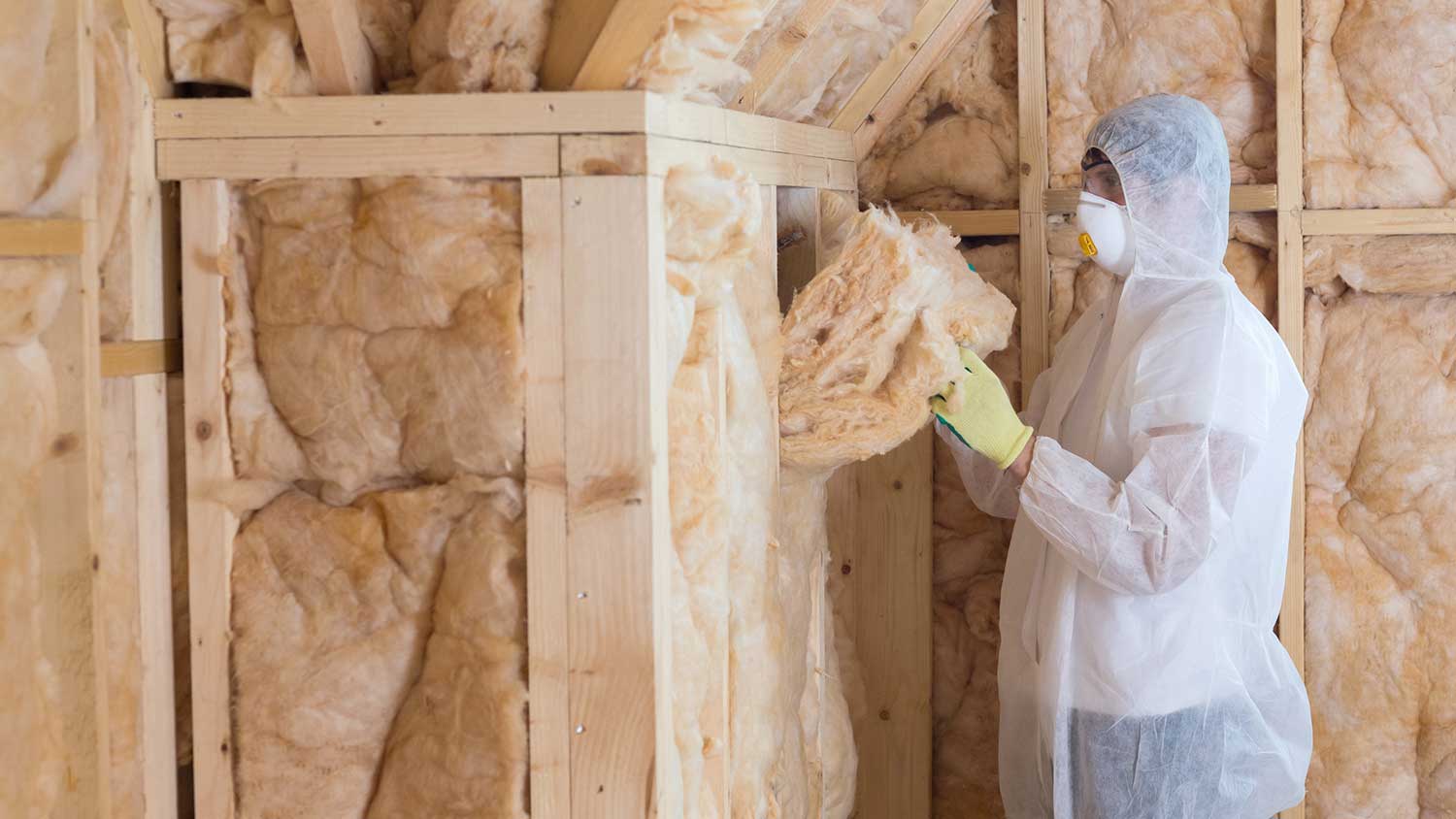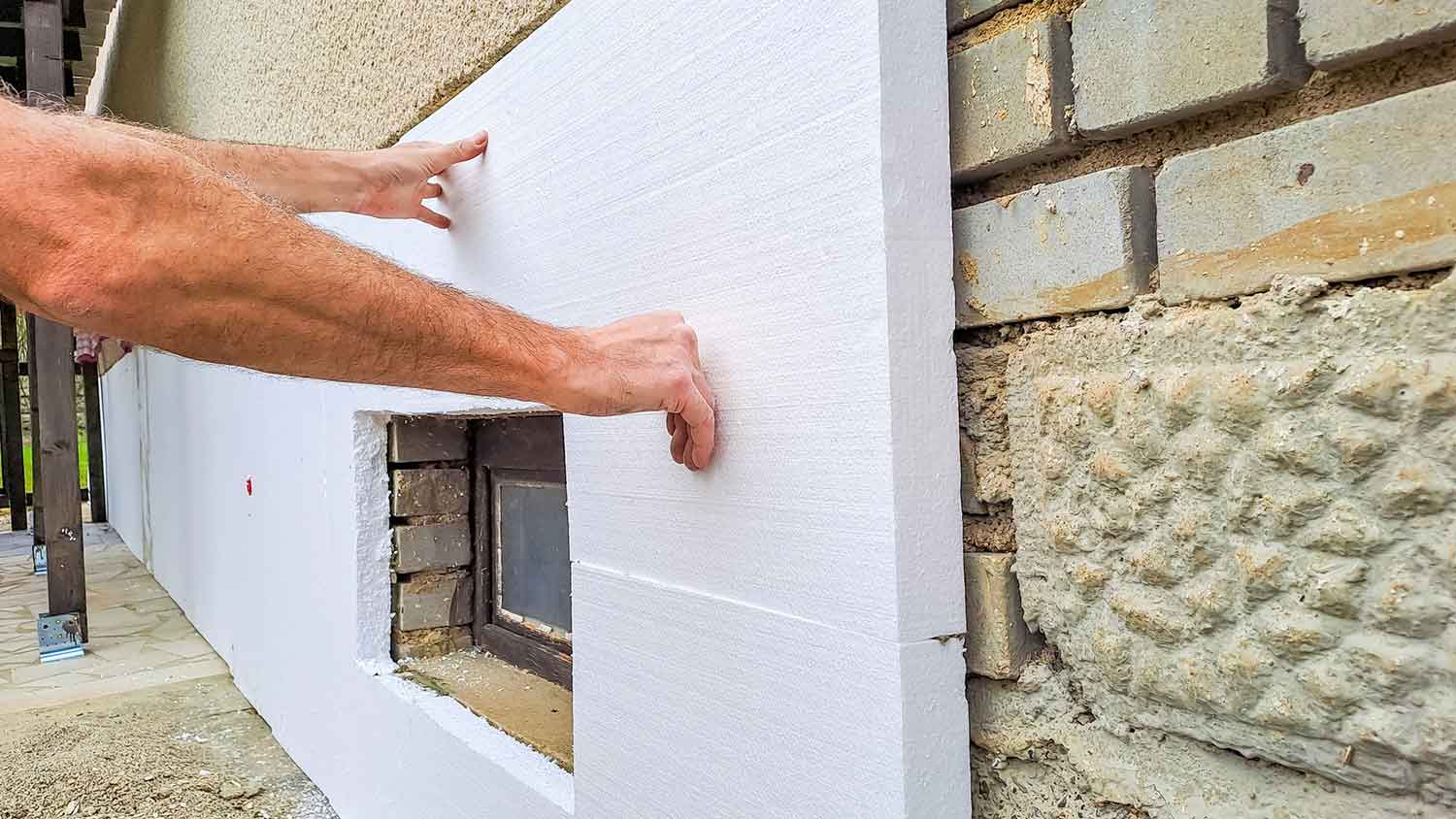Fiberglass Insulation vs. Foam Board: Pros, Cons, and Cost
Not all insulation is created equal


Fiberglass insulation works well for interior walls as a DIY installation.
Foam board insulation works better in areas with moisture issues.
Fiberglass insulation costs less to install than foam board.
Foam board insulation’s R-value is much higher than fiberglass insulation.
When it’s time to fight back against high heating and cooling bills, adding insulation gives you better energy efficiency. When you’re standing in the hardware store and looking at your options, you may have to decide between fiberglass insulation and foam board insulation. Although the two materials have a significantly different appearance, picking the right one depends more on the planned use case than the look. Learn more about these two insulation options and when to use them.
Fiberglass Insulation vs. Foam Board Insulation: Key Differences
The primary difference between fiberglass insulation versus foam board insulation is the places where you’ll use them. Fiberglass insulation works well in wall stud framing, unfinished floors, and unfinished ceilings, while foam board insulation works better for exterior walls, basement foundations, and crawl spaces.
What Is Fiberglass Insulation?

Fiberglass insulation appears in rolls or batts of material. It has a soft, flexible design, making it easier to squeeze into wall framing. It often has a paper facing that makes it easier to handle.
| Pros | Cons |
|---|---|
| Lower cost | Itchy when handled |
| Average R-value | Can spark allergies |
| Easy installation | Moisture is a problem |
Best for:
Adding insulation while the framing is visible.
Those who need an inexpensive option.
Interior walls where moisture is not present.
Pros of Fiberglass Insulation
Fiberglass insulation is easy to install. When comparing spray foam insulation versus fiberglass insulation, fiberglass is often easier to install yourself. However, if you want to install spray foam insulation, you’ll have to hire a pro who has the equipment to do the job safely and correctly.
Fiberglass insulation carries an average R-value compared to other types of insulation, meaning it does an adequate job of resisting the movement of air through it. However, its R-value of about 3.5 per inch of thickness is less effective than foam board insulation’s R-value of about 6.5 per inch of thickness.
Fiberglass insulation is one of the less expensive types of insulation, frequently averaging less than $1 per square foot of coverage.
Cons of Fiberglass Insulation
One of the biggest disadvantages of fiberglass insulation is that it can irritate your skin. You’ll want to cover exposed skin and wear gloves and goggles. It collects dust and can spark allergies or breathing problems for people who are handling it without wearing a mask.
If you install fiberglass insulation in areas where moisture could be exposed, mold and mildew can grow. This happens because the fiberglass traps moisture in the loose material.
What Is Foam Board Insulation?

Foam board insulation is a rigid type of foam often sold in pieces measuring 4-by-8 feet. It’s available in thicknesses between 0.25 and 2 inches. It works well in areas where moisture may be a problem, such as a basement foundation wall.
| Pros | Cons |
|---|---|
| Resists moisture | Difficult to install |
| High R-value | Pricey material |
| Reduces noise | No fire resistance |
Best for:
Installing between foundation walls and drywall.
Using in areas where moisture may be a problem.
Those who need a very high thermal resistance value.
Pros of Foam Board Insulation
You can use foam board insulation in areas where moisture problems may exist. When you want insulation in a damp basement, attic, or crawl space, foam board wins the fiberglass insulation versus foam board comparison.
Foam board has one of the highest R-value measurements among all types of insulation. Fiberglass insulation’s R-value is significantly lower than what’s found with foam board.
If you need noise reduction as part of your insulation installation, foam board will block sound better than fiberglass insulation.
Cons of Foam Board Insulation
Foam board insulation is more difficult to install than rolls of fiberglass insulation. It often requires the use of a professional. The material is almost double the cost of fiberglass insulation, so you may want to hire a pro to ensure the job goes smoothly and that you don’t waste any of the foam board material.
Using foam board insulation on interior walls is less effective than using fiberglass insulation. Foam board is not fire resistant like fiberglass when used inside interior walls. You shouldn’t have moisture issues inside interior walls, so one of the foam board’s primary strengths doesn’t help in this area.
Fiberglass Insulation vs. Foam Board Insulation
We put together a detailed comparison of fiberglass insulation versus foam board insulation and picked a winner for each category.
Performance: Foam Board
If you want the maximum R-value in your insulation, foam board outperforms nearly all kinds of insulation, including fiberglass.
When compared at similar thicknesses, fiberglass insulation offers roughly half the insulative properties—measured by the R-value—of foam board insulation.
Appearance: Tie
Both fiberglass insulation and foam board insulation hide behind drywall or other wall materials, so appearance isn’t overly important with either insulation material.
Durability: Tie
Both fiberglass and rigid foam board insulation can last up to 100 years when you avoid damaging them. Fiberglass insulation can compress and rigid foam boards can break if placed under stress, though.
Price: Fiberglass
The cost of fiberglass insulation averages about $.90 per square foot of coverage, while rigid foam board insulation costs about $1.50 per square foot on average.
Ease of Installation: Fiberglass
Rolls and batts of fiberglass have the perfect size and flexibility to fit inside the studs of a wall frame. They’re often available in widths of 15 or 23 inches to match common wall stud dimensions.
Foam boards need a professional installer, which increases their installation cost. To install foam board, the pro must glue it to the wall and seal the joints between boards before placing drywall over the top of it.
You may be able to do a fiberglass installation yourself, or you can hire a pro. If you decide to DIY the job, you will want to wear protective gear because fiberglass may make your skin itch or cause allergic reactions.
The insulation cost for an average-sized job is about $1,700 to hire a professional. You can call a local insulation installation professional to do this work and to advise you on the right material to use in each area of your home.
Maintenance: Tie
Maintenance of fiberglass insulation and foam board insulation is not necessary. Both types of insulation typically go behind drywall and don’t require maintenance.
Eco-Friendliness: Foam Board
Some types of rigid foam board insulation (including polyiso) consist of varying levels of recycled materials when manufactured. Fiberglass insulation consists of glass fibers, which come from sand. Although sand is a highly abundant material, fiberglass insulation doesn’t contain any recycled materials.
You may be able to recycle both fiberglass insulation and foam board insulation at the end of their life spans, although it can be tough to find local places to recycle these materials.















